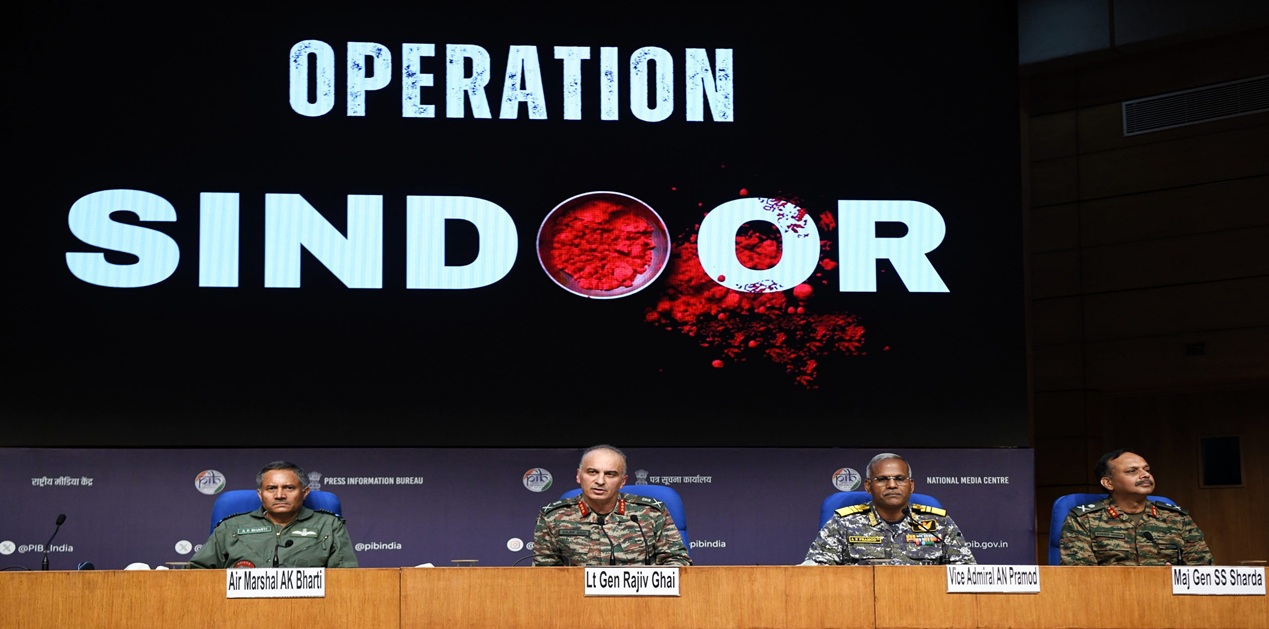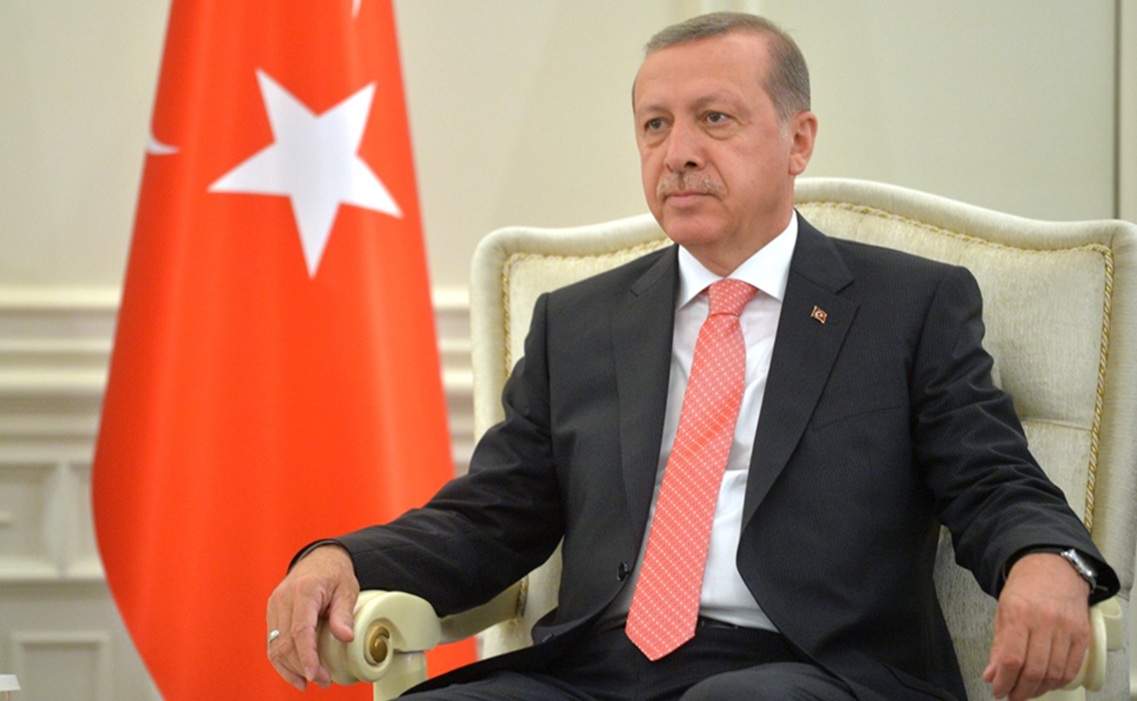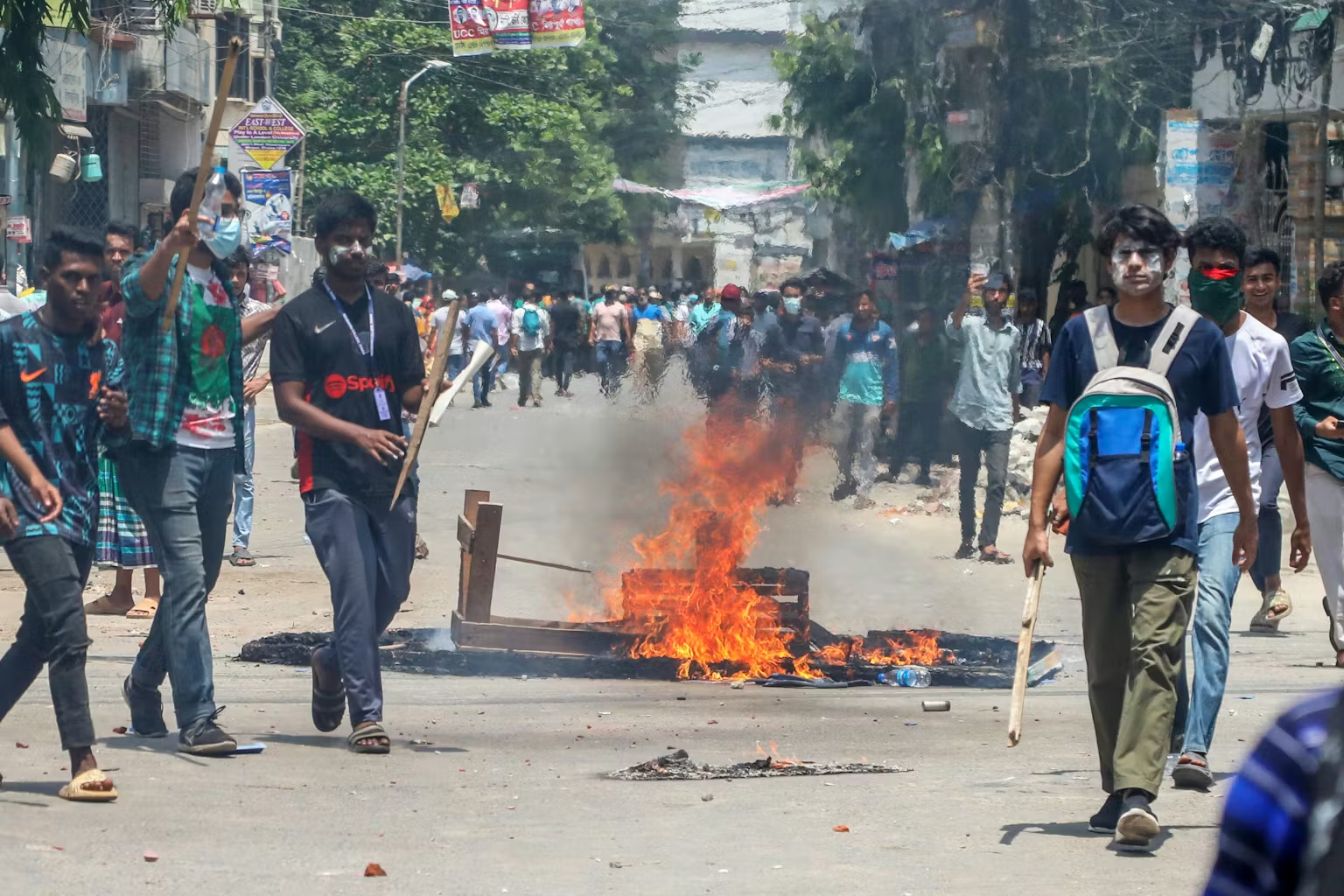Disclosing the right information at the right time is very important to keep an edge in the Information Warfare against the adversary. The use of Information and Communication Technologies in warfare scenarios has been the focus of interest for governments, intelligence agencies, computer scientists, and security experts over the past two decades. Information Warfare is the use of Information and communication technologies with either an offensive or defensive purpose to immediately intrude, disrupt, or control the opponent’s resources. While Information warfare is as old as military history, the revolution in communication sciences has changed its nature. It has become a double-edged sword, equally important for powerful states as well as technologically underdeveloped states, non-state actors, and individual software experts. Some countries, especially Russia and the US, have taken a serious view of Information warfare technology and equated it with the threat of Weapons of Mass Destruction. In the South Asian context, recently, Pakistan played dirty against India at the beginning of Op Sindoor, but later, they were under direct attack by the Indian proxies. In addition, the Western media presents a very pessimistic view of Pakistan’s economy, law and order, and governance issues. Pakistan’s armed forces and its intelligence agencies are the primary target of the propaganda warfare campaign launched by the national media of India. Information warfare has become very relevant and inevitable.
Introduction
The volatile relationship between India and Pakistan has been driven by longstanding political disputes, territorial conflicts, and numerous military clashes, especially over Kashmir. Since their partition in 1947, these two nuclear powers have fought four major wars (1947, 1965, 1971, and the 1999 Kargil conflict), along with various skirmishes and proxy wars. Recently, a new element has emerged in information warfare and disinformation campaigns that seek to sway public opinion, influence strategic choices, and undermine national security using digital media and narratives. Events like the 2019 Pulwama attack and Balakot airstrikes, as well as the 2016 surgical strikes and the 2025 Operation Sindoor an escalation in tensions highlighted how both countries now operate across multiple domains, where cyber tactics, social media influence, and psychological warfare are key. These efforts, often driven by state-sponsored stories and amplified by influencers, bots, and mainstream outlets, cause confusion, deepen societal divides, and serve strategic goals beyond the battlefield. This analysis examines how India and Pakistan use information operations and disinformation during recent conflicts, especially Operation Sindoor, to understand their impact on India’s security. It seeks to identify patterns in digital propaganda, evaluate their success in shaping public opinion, and highlight gaps in India’s counter-disinformation efforts. As modern conflict increasingly targets the mind, understanding these dynamics is vital for developing a resilient national security approach.
Literature Review
The 2025 India–Pakistan air conflict, initiated by the Pahalgam terror attack, highlights the increasing merging of traditional warfare with influence operations in the digital era. It featured intense aerial combat, precise drone attacks, and a widespread influx of AI-generated propaganda, signalling a shift in how modern conflicts are fought, both on the battlefield and within the perceptions of domestic and global audiences. India’s Operation Sindoor and Pakistan’s Operation Bunyanun Marsoos advanced beyond military actions, involving competing narratives shared online, often distorted by disinformation, manipulated images, and algorithmic boosting. This move toward information-driven warfare is thoroughly examined in Adil Rasheed’s 2024 monograph Influence Operations: The Sharp Power of Non-Kinetic Subversion, which traces influence operations’ evolution from early psychological tactics to today’s AI-driven campaigns. Rasheed notes that modern influence operations go beyond spreading lies; they aim to manipulate perceptions, erode trust, and destabilise governance through covert, often unseen, methods. His analysis of how countries like China and Russia use asymmetric information strategies, along with his recommendations for legal reforms, communication resilience, and public awareness, offers a valuable perspective on the forces behind the 2025 conflict.
Meanwhile, Hussain et al. (2021) on the 2019 Pulwama crisis highlight the participatory role of digital propaganda in the India–Pakistan context. Their study, examining over 20,000 tweets using key national hashtags, found that ordinary citizens, rather than official state actors, mainly drove polarising narratives. With nearly 59% of content linked to politically affiliated troll accounts, the research emphasises the grassroots aspect of digital warfare, where users help create echo chambers and foster nationalist fervour, often ignoring cross-border dialogue or factual accuracy. This indicates that influence operations are not just top-down but increasingly crowd-sourced, emotionally charged, and rooted in collective memory and regional tensions. Together, these analyses show how both government-led and citizen-driven information warfare are reshaping conflict dynamics in South Asia. They stress the urgent need for comprehensive counterstrategies that include diplomatic efforts, cybersecurity measures, digital literacy, and a redefined security framework that views information as both a weapon and a battlefield.
Research Gap
While much has been written about the military and political aspects of India-Pakistan conflicts, few studies have examined how information warfare shapes these confrontations in real time. Operation Sindoor (2025) is a notable case where digital tactics, fake news, and AI-generated content played significant roles, yet academic attention remains limited. Most research either discusses cyber threats broadly or focuses on traditional warfare, overlooking how misinformation and digital narratives impact security decisions. Additionally, there is little analysis of India’s responses to these emerging challenges or whether our fact-checking capabilities are sufficient. Are we ready to counter deepfakes and viral propaganda? These questions need further exploration. This study aims to address this gap by analysing how both India and Pakistan used information as a weapon during Operation Sindoor and what implications this has for India’s security and policy planning.
Hypothesis
Information operations and disinformation campaigns during recent India–Pakistan conflicts, particularly Operation Sindoor, have significantly influenced India’s national security by shaping public perception, disrupting strategic communication, and complicating defence and diplomatic response.
Research Objective
- To examine the nature and scale of information operations and disinformation campaigns during Operation Sindoor.
- To evaluate the effectiveness of India’s strategic communication and national security responses to information warfare.
- To analyse how digital propaganda influenced India’s military and diplomatic decision-making during the conflict.
Research Question
In what forms were information operations and disinformation campaigns conducted during Operation Sindoor and other recent India–Pakistan conflicts?
Methodology
Qualitative research
- Case Study Method: The study will focus on Operation Sindoor as a case study to understand how information operations were planned, executed, and responded to.
- Descriptive and Analytical: It will describe the sequence of events and tactics used and critically analyse their impact and effectiveness.
- Digital Content Analysis: Collection and examination of viral social media posts and hashtags. Analysis of deepfakes, manipulated images/videos, and bot activity patterns.
- Secondary Data Analysis: Academic journals, policy papers, government reports, and think-tank publications.
During the Kargil War 1999 (PR Campaign)
The India-Pakistan relationship has been marred by a series of armed conflicts, territorial disputes, and deep-seated mistrust since their independence in 1947. Among the most critical of these confrontations was the Kargil War of 1999, a limited but high-intensity conflict fought in the Kargil-Dras sector of Jammu and Kashmir. The conflict began when Pakistani soldiers and militants infiltrated Indian positions along the Line of Control (LoC), leading to a strong military response from India. While the war was fought largely in conventional military terms, it also marked an early example of how information operations and disinformation campaigns could be strategically deployed to shape narratives, both domestically and internationally.
During the Kargil conflict, both India and Pakistan utilised traditional and emerging media to influence public opinion, build international support, and discredit each other. India effectively leveraged international diplomacy and transparent media reporting to present its case, while Pakistan attempted to conceal its direct involvement, promoting a narrative that the intruders were Kashmiri militants rather than regular troops. However, the exposure of Pakistani military documents and global pressure eventually led to Pakistan’s diplomatic isolation.
India’s PR Campaign 1999
1. Transparent Media Engagement:
- India allowed extensive media coverage of the conflict, granting journalists access to frontline areas.
- War footage, images of Indian soldiers, and interviews with army officials were regularly broadcast on national television (Doordarshan) and private channels.
- This transparency helped build public trust and reinforce the narrative of India responding defensively to Pakistani aggression.
2. Diplomatic Outreach:
- India launched a strong international diplomatic campaign to expose Pakistan’s role in violating the Line of Control (LoC).
- The Indian government presented evidence to world leaders, including maps, documents, and statements from captured Pakistani soldiers.
- This helped India gain international support, particularly from the United States and other Western powers.
3. National Unity Messaging:
- The Indian PR campaign focused on patriotism, sacrifice, and national unity.
- Stories of martyred soldiers like Captain Vikram Batra and Lt. Saurabh Kalia were amplified to create emotional resonance among the public.
- State-owned media and cultural programs were used to mobilize public support for the war effort.
Pakistan’s PR Campaign 1999
1. Denial and Deflection Strategy:
- Pakistan’s initial PR approach was to deny the involvement of its regular army, portraying the intruders as “Kashmiri freedom fighters.”
- This narrative was meant to deflect international criticism and avoid being seen as the aggressor.
2. Limited Media Access:
- Pakistani media was tightly controlled, with limited access to frontline information and a strong censorship regime.
- The military heavily influenced reporting, which created a disconnect between public perception and ground realities.
3. Domestic Mobilisation:
- The PR campaign in Pakistan emphasised solidarity with Kashmiris and projected India as the oppressor.
- Religious and nationalist rhetoric was used to rally domestic support, though this approach lacked credibility internationally.
4. Weak International Messaging:
- Unlike India, Pakistan failed to convincingly communicate its narrative to the global community.
- The lack of credible evidence and the eventual capture of Pakistani soldiers (e.g., documents and ID cards) exposed its involvement, weakening its diplomatic standing.
During Operation Sindoor 2025
Operation Sindoor exemplifies modern hybrid warfare, where information operations and psychological nudges are as potent as missiles. India’s campaign featured strategic emotional branding, controlled virality, and rigorous fact-check systems, while Pakistan responded with coordinated disinformation, ideological messaging, and visual deception. Recognising these PR warfare patterns is crucial for strengthening India’s resilience against emerging threats in the cognitive domain.
India’s PR Strategy
1. Strategic Branding & Symbolism
- Name & logo design: India codenamed the strikes “Operation Sindoor” using the vermilion symbol of marriage to evoke emotional resonance as protection for widows of Pahalgam victims. A bespoke logo was launched, appearing across digital platforms and press materials.
- Gendered narrative: The first sit-down briefing was led by two decorated female officers, Col. Sofiya Qureshi and Wing Commander Vyomika Singh, alongside the Foreign Secretary. This symbolized both national unity and progressive values, framing the strikes as morally grounded and inclusive.
2. Media Roll-Out & Launch Timing
- Cinematic launch: An emotionally charged montage accompanied the press conference (“Yachna nahin, ab rann hoga”), evoking patriotic fervor.
- Timing for virality: The operation was disclosed at off-peak hours (~3 AM) to ensure social media alerts trended early, with hashtags, WhatsApp content, and reels circulating before mainstream news channels joined.
3. Fact-Checking & Narrative Control
- Proactive rebuttals: The government’s Fact Check Unit (PIB & I&B Ministry) quickly debunked Pakistani misinformation claims, jet shootdowns, base strikes, and civilian casualties, through routine releases and rebuttals.
- Digital monitoring: Journalists like Mohammed Zubair and platforms like Alt News played a key role in identifying and calling out Pakistani fake accounts and doctored footage.
Pakistan’s PR campaign
1. Rapid Disinformation Offensive
- False counterclaims: Pakistani state-linked media and officials circulated fabricated stories about shooting down Rafale jets, capturing Indian pilots, and missile attacks on Indian cities, all of which were proven incorrect.
- Visual deception: Doctored satellite images and video game footage were deployed to bolster claims of retaliatory strikes, misattributed to Operation hits like those at Adampur airbase.
2. Coordinated Media Machinery
- State-backed amplification: Pakistan’s DG ISPR, government officials, and pro-state media amplified narratives with selective leaks and misleading visuals aimed at muddying international perception.
- Ideological framing: Pakistan launched its own “Operation Bunyan al Marsoos,” invoking religious symbolism to appeal to Islamic solidarity, though this failed to gain significant ground due to Indian ulema support for India.
Non-Military Measures Taken by India During Operation SINDOOR:
Suspension of the Indus Water Treaty
- Indus Waters Treaty (1960) held in abeyance until Pakistan ends cross-border terrorism.
- Impacts:
- It threatens 80% of Pakistan’s irrigated farmland.
- Risked water shortages and blackouts due to limited dam storage (10% live capacity).
- Major disruption to agriculture, industry, and the economy.
- Gave India control over the Jhelum and Chenab rivers.
- Enabled the construction of reservoirs in Jammu & Kashmir, Ladakh, Punjab, and Haryana.
- Boosted irrigation and hydropower.
- Sent a strong message: “Blood and water cannot flow together.”
Closure of Attari-Wagah Border & Trade Suspension
- Immediate shutdown of the Integrated Check Post, Attari.
- Citizens are allowed to return by 01 May 2025.
- All bilateral trade suspended:
- Stopped export of essential items (e.g., onions).
- Banned imports of cement, textiles.
- Severely disrupted Pakistan’s economy without military escalation.
Visa Revocation and Deportation
- All visas of Pakistani nationals were revoked post-Pahalgam attack.
- Immediate deportation of all Pakistanis residing in India.
- Suspension of travel under the SAARC Visa Exemption Scheme.
Cultural and Media Blackout
- Total ban on Pakistani artists:
- No performances, music, screenings, or cultural exchanges.
- Pakistani content removed from streaming platforms.
- Aimed at erasing Pakistan’s soft power influence in India.
Global Diplomatic Offensive
- India actively exposed Pakistan’s terror networks on international forums.
- Secured greater international condemnation and isolation of Pakistan.
Diplomatic Staff Reduction
- Pakistani Defence, Naval, and Air Advisors in New Delhi were declared persona non grata.
- The strength of the Pakistan High Commission in Delhi reduced from 55 to 30.
These measures showcased India’s strong, non-military retaliation strategy, hitting Pakistan’s economy, diplomacy, and international standing while avoiding direct military confrontation.
The Rise of AI in Information Warfare
Artificial Intelligence has often been viewed as a force for progress, driving breakthroughs in medicine, transportation, and even daily life. But as technology advances, so does its darker side. In recent years, AI has quietly become a powerful tool in the world of disinformation, and the 2025 India-Pakistan conflict was a clear turning point. It was the first time in South Asia that AI-generated content was used on such a large scale to shape how people understood and reacted to a conflict.
One of the most shocking examples was a deepfake video of Pakistan’s Prime Minister, Shehbaz Sharif. The video made it look like he was admitting defeat and complaining about a lack of help from allies like China and the UAE. But the truth was very different in the real video; Sharif was praising the Pakistani Air Force for their response to India’s Operation Sindoor. AI tools had cloned his voice and altered his lip movements so convincingly that many believed the fake version without question.
On the Indian side, news channels broadcast animated clips showing Indian missiles taking down Pakistani drones and fighter jets. In one clip, a drone is shown exploding from a dramatic, ground-level view, something impossible to capture in real time. But there were no warnings or disclaimers to say it was a simulation. To the average viewer, it looked real. These AI-powered visuals and deepfakes blurred the line between fact and fiction, making it harder for people to know what to believe in the middle of a fast-moving and emotional conflict.
Conclusion
In summary, the developments surrounding Operation Sindoor underscore the growing influence of information warfare in contemporary India-Pakistan conflicts. Media outlets, largely shaped by official narratives, have played a key role in creating nationalistic stories, frequently prioritising emotional impact over verified facts. While Indian media showcase strength and unity, Pakistani media portray themselves as victims of aggression, with both sides reinforcing their governments’ positions. Social media has amplified these narratives, forming echo chambers that fuel public outrage and limit balanced discussion. Consequently, society becomes more driven by fear, anger, and polarisation, with content designed more to provoke than to inform. This environment, where truth is often sacrificed for strategic messaging, risks undermining democratic principles, mutual trust, and regional stability over the long term. As governments treat the information domain as a battlefield, the true cost may be the erosion of objective dialogue and shrinking space for peace and understanding.
Title image courtesy: VIF
Disclaimer: The views and opinions expressed by the author do not necessarily reflect the views of the Government of India and Defence Research and Studies

References
Janjua, R. A. A. (2025). Four days to the brink: The 2025 India-Pakistan air war. Available at SSRN 5252595.
Rasheed, A. (2024). Influence Operations. The Sharp Power of Non-Kinetic Subversion, New Delhi.
Hussain, S., Shahzad, F., & Saud, A. (2021). Analysing the state of digital information warfare between India and Pakistan on the Twittersphere. SAGE Open, 11(3), 21582440211031905.
Khan, K. (2012). Understanding information warfare and its relevance to Pakistan. Strategic Studies, 32, 138-159
https://www.orfonline.org/expert-speak/media-and-the-kargil-war-staging-india-s-first-live-war






